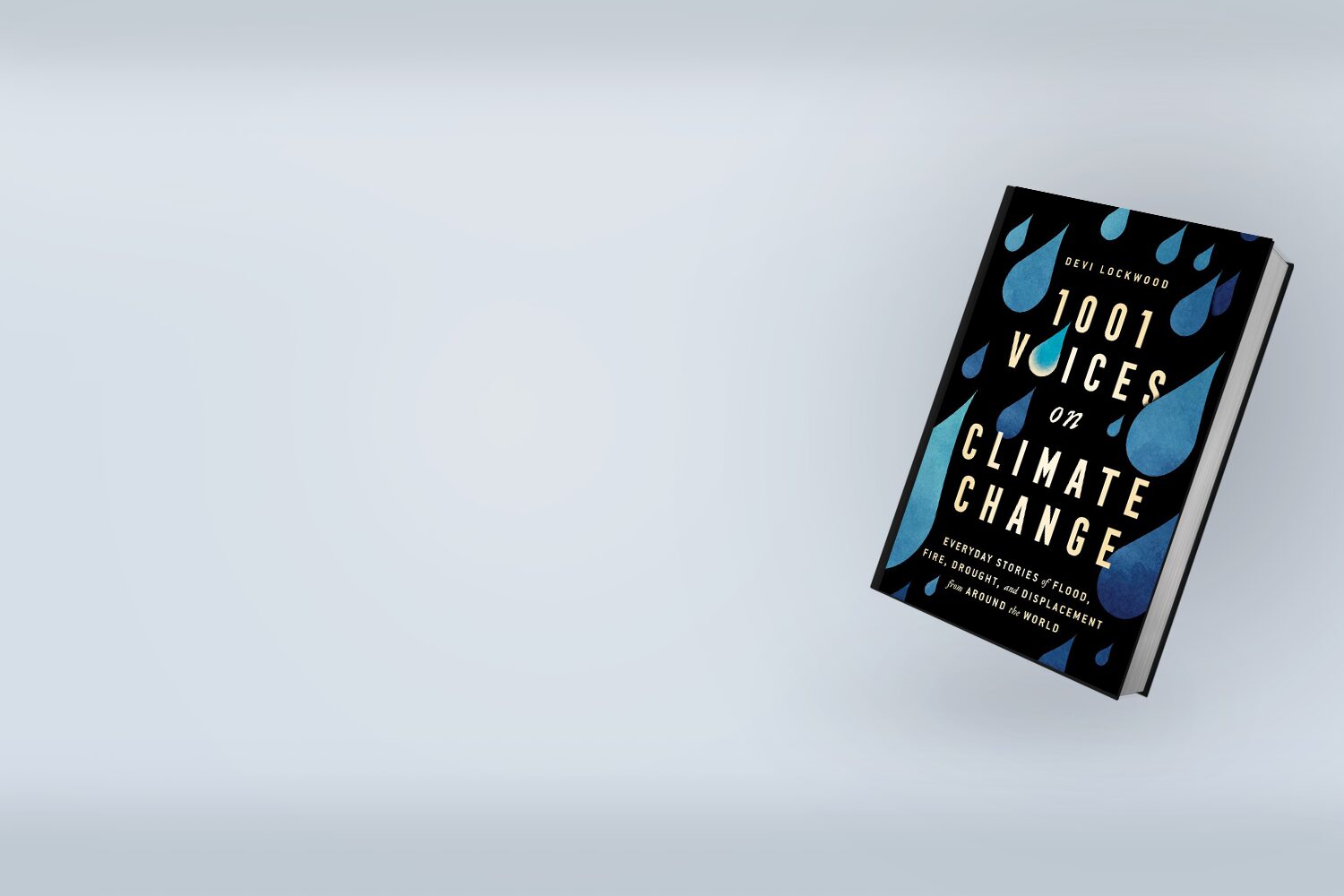Rare Reads
Book of the Month
1,001 Voices on Climate Change: Everyday Stories of Flood, Fire, Drought, and Displacement from Around the World
Devi Lockwood
“Tell me a story about climate change.”
This is the prompt that writer Devi Lockwood posed to people she met along her five-year journey traveling around the world, often by bike, to collect first-person accounts of climate change. Across twenty countries and six continents, Lockwood collected an astounding 1,001 individual stories from voices on the frontlines of climate change, whose stories often go unheard.
By emphasizing human voices over statistics, Lockwood uses the power of storytelling to make the impacts of climate change more vivid and relatable. She urges her readers to see climate change, not as something distant and abstract, but as something happening now, to people everywhere. 1,001 Voices makes a case for why urgency and empathy are needed, and how stories can be powerful tools for understanding, awareness, and possibly action.
Discussion questions:
- As a society, who do we generally regard as being “experts” on climate change, and how does Lockwood’s book challenge those norms?
- How do the stories presented in Lockwood’s book differ from typical news headlines about climate change? Do you think that one form of storytelling is more impactful than the other?
- Are there perspectives, voices, and stories that do not appear in Lockwood’s book that you think would be valuable to have? Why?
- By presenting many different stories and perspectives, Lockwood shows the breadth and diversity of climate change stories worldwide and can position them in conversation with each other. What are the pros and cons of this type of story format as opposed to going in-depth on a single storyline?
- Think about the book as a whole – what emotions come through the stories that Lockwood shares? Is there a balance of despair for what has been lost and hope for a better future, or does the book lean more heavily towards one or the other?

Be the first to know what we’re reading. Subscribe to Rare Reads today!
Sign me up for occasional emails to learn more about Rare’s work and how I can support its mission. I know I can unsubscribe at any time.
Previously Featured Books
Use the scrollbar below the books to see the full shelf. Click on a book below to check it out.
Recommend a book
Have a book in mind that we should feature? Let us know!